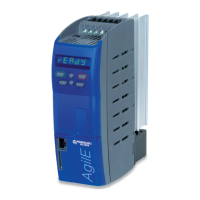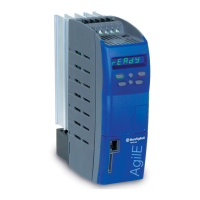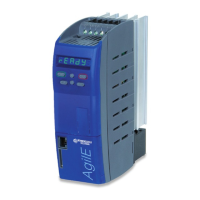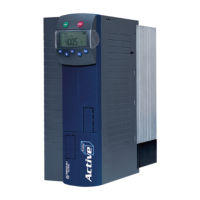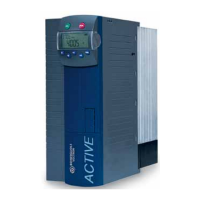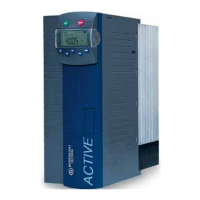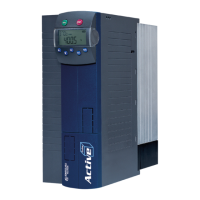Parameter descriptions
If an error is signaled in a branch both for positive and negative current, the relevant load branch
circuit is open (e.g. broken wire) or the relevant current measurement is defective. If an error is sig-
naled in a branch for one polarity only, an IGBT or driver is defective or a connection in the device is
interrupted.
The impressed direct current is 25% of the peak value of the rated current. The rated current must be
set with parameter
Rated Current 371 in data set 1.
In order to prevent damage of the device and the load, the output voltage is limited. If the set current
(see above) cannot be reached with this voltage due to a high ohmic resistance of the load, an open-
circuit error is identified in each branch. In this case, the current to be impressed must be reduced by
changing parameter
Rated Current 371.
Stop. Test stopped by user.
Permanent error. Non-acknowledgeable error present. No (further) test possible.
Signals on digitals inputs STOA and STOB for enable missing. No enable.
At the beginning of the test an inadmissible current flows.
U open. It was not possible to impress a positive current in branch U.
V open. It was not possible to impress a positive current in branch V.
W open. It was not possible to impress a positive current in branch W.
-U open. It was not possible to impress a negative current in branch U.
-V open. It was not possible to impress a negative current in branch V.
-W open. It was not possible to impress a negative current in branch W.
U short-circuit. Short-circuit cutoff during impression of positive current in branch U.
V short-circuit. Short-circuit cutoff during impression of positive current in branch V.
W short-circuit. Short-circuit cutoff during impression of positive current in branch W.
-U short-circuit. Short-circuit cutoff during impression of negative current in branch U.
-V short-circuit. Short-circuit cutoff during impression of negative current in branch V.
-W short-circuit. Short-circuit cutoff during impression of negative current in branch W.
Earth fault Phase U. Earth fault cutoff during impression of positive current in branch U.
Earth fault Phase V. Earth fault cutoff during impression of positive current in branch V.
Earth fault Phase W. Earth fault cutoff during impression of pos. current in branch W.
-U earth fault. Earth fault cutoff during impression of negative current in branch U.
-V earth fault. Earth fault cutoff during impression of negative current in branch V.
-W earth fault. Earth fault cutoff during impression of negative current in branch W.
U Soft earth fault. The DC-link voltage has increased. Insulation problem in motor.
V Soft earth fault. The DC-link voltage has increased. Insulation problem in motor.
W Soft earth fault. The DC-link voltage has increased. Insulation problem in motor.
-U Soft earth fault Phase U. Insulation problem in motor.
-V Soft earth fault Phase V. Insulation problem in motor.
-W Soft earth fault Phase W. Insulation problem in motor.
Asymmetric phase voltages.
Internal error. Abort and restart the test.
If Test 2 signals an earth fault while Test 1 did not signal an earth fault, a current measurement will
probably be defective.
If Test 2 signals a short-circuit, there is either a short-circuit in the load or a current measurement is
defective.
119
Machine data 06/2013 Operating Instructions
Agile
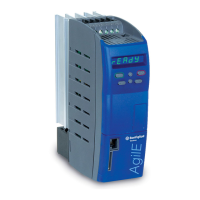
